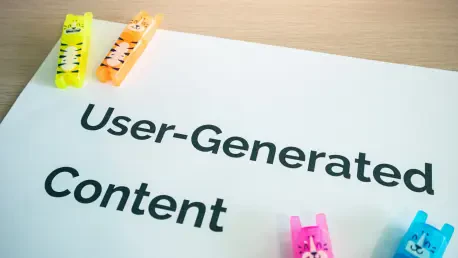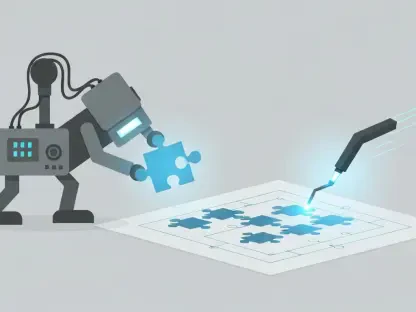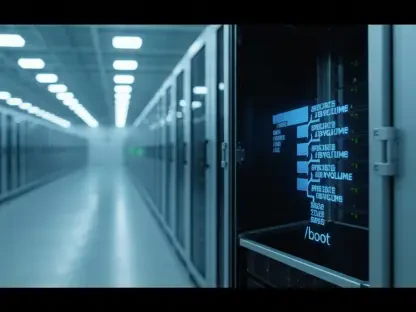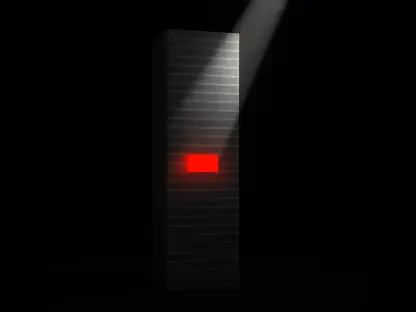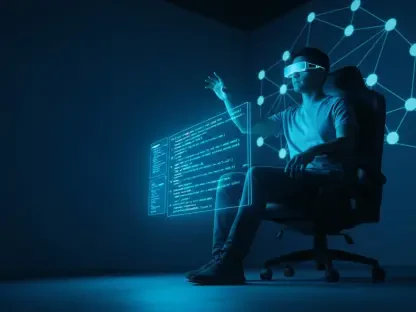The emergence of AI technologies has fundamentally altered the landscape of content creation, giving rise to significant challenges regarding originality and authorship. As AI tools become more sophisticated and prevalent in generating written content, the line between human-created and AI-generated work blurs, posing risks of unintentional plagiarism and potential misuse of these advanced capabilities. In this context, AI content detectors have become essential tools, designed to identify and differentiate AI-generated text from that crafted by human hands. These detectors are critical in maintaining the integrity of authorship and ensuring proper attribution in creative and scholarly work.
Evolving AI Detection Capabilities
Back in early 2023, the capabilities of AI content detectors were still in formative stages, with their highest identification success rate capping at 66% for recognizing AI-generated text. Fast forward to today, and the advancements in these tools have been remarkable, witnessed by a noteworthy expansion from just three detectors to a total of ten. Among them, half have achieved a perfect identification accuracy rate, highlighting the rapid advancements in AI detection technology. This progress underscores the crucial role that these detectors play in navigating the complexities associated with generative AI.
The concept of “AI-generated plagiarism” is central to current discussions on the implications of AI in creative writing. It refers to the production of content using AI tools without proper attribution, fitting the traditional definition of plagiarism. As a result, the development of reliable AI detectors has become crucial for identifying such instances and preserving originality and authenticity in writing. Their importance in this landscape cannot be overstated; they are pivotal in upholding ethical standards and ensuring credit is given where due.
Testing and Results Methodology
David Gewirtz, in his detailed evaluation approach, employed a consistent and methodical strategy to analyze the effectiveness of AI detectors. By subjecting each tool to five distinct text blocks—comprising two written by himself and three generated by ChatGPT—he aimed to assess the accuracy threshold. His benchmark for a successful identification was set at exceeding a 70% probability that the text was either human or AI-generated. This systematic approach provided a solid framework for understanding the detectors’ capabilities and offered a clear metric for comparison.
Throughout six iterative rounds of testing, discernible patterns began to emerge regarding the detectors’ performance. A general trend of improvement was noted, yet there remained an absence of consistency across different types of content. This inconsistency highlights the challenges that come with relying solely on these detectors for validation purposes, especially in contexts where authorship may not be readily apparent. The need for caution is evident when these tools are employed, especially given the varied writing styles they encounter.
Tools and Their Accuracy Assessments
The testing unearthed substantial variances in performance among the tested AI detectors, revealing both strengths and weaknesses inherent in these tools. Notably, GPTZero and Copyleaks exhibited significant discrepancies, producing inconsistent results even when presented with identical inputs in different testing iterations. This fluctuation underscores the burdensome challenge of achieving stable and reliable accuracy, indicating that even well-known tools can struggle in maintaining consistency.
Conversely, new entrants such as Monica and established technologies like QuillBot and ZeroGPT have demonstrated exceptional performance, achieving perfect detection accuracy. These tools represent a compelling blend of new and veteran approaches, each navigating the intricate nuances of identifying AI-generated text. Their success is a promising indication of the potential for both emerging and matured technologies in addressing this complex issue, offering robust solutions to the growing problem of AI-generated plagiarism.
Reliability Concerns and Recommendations
Despite the noticeable advancements seen in AI detectors, concerns regarding their reliability linger. Gewirtz advises against an over-reliance on these tools for verifying content authenticity, pointing out the inconsistencies that have been observed across different detectors. Instead, he suggests that AI detectors should be used as part of a larger, more comprehensive validation process that encompasses various strategies to assess originality and authenticity, rather than relying on a singular, isolated solution.
The need to uphold editorial and academic integrity remains a dominant theme in this conversation. Gewirtz emphasizes the critical role of ongoing scrutiny and the refinement of AI detection technologies to guarantee their reliability and accuracy. This is particularly pertinent in settings such as academic research and education, where precision and credibility are vital. Ensuring that these technologies are continually evaluated and improved is key to maintaining trust in the systems designed to protect against unintentional plagiarism and ensure the rightful attribution is upheld.
Future Prospects and Continuous Evaluation
The rise of artificial intelligence technologies has brought about a significant shift in the field of content creation, leading to challenges concerning originality and authorship. As AI-powered tools become increasingly advanced and widespread in producing written material, the distinction between content created by humans and that generated by machines begins to blur. This raises concerns about unintentional plagiarism and the misuse of AI’s sophisticated capabilities. In such a scenario, AI content detectors have emerged as vital instruments. They are specifically designed to identify and distinguish between AI-generated text and that produced by human authors. These detectors play a crucial role in safeguarding the integrity of authorship, ensuring that proper credit is given where it is due, especially in creative and scholarly endeavors. With AI’s capabilities constantly evolving, maintaining the authenticity and originality of written content becomes ever more challenging. Therefore, the use of AI content detectors is not just beneficial but necessary to uphold high standards in writing, whether for academic purposes or creative pursuits. Their implementation helps prevent ethical dilemmas, such as unintentional plagiarism, by verifying the source of content creation. In a digital age where AI’s imprint on our lives continues to expand, these tools support the responsible use of technology in content creation.
